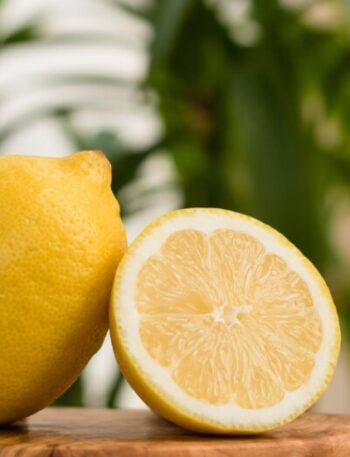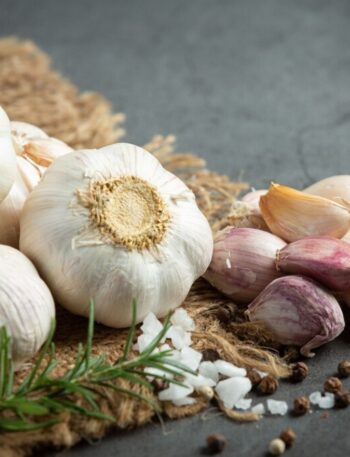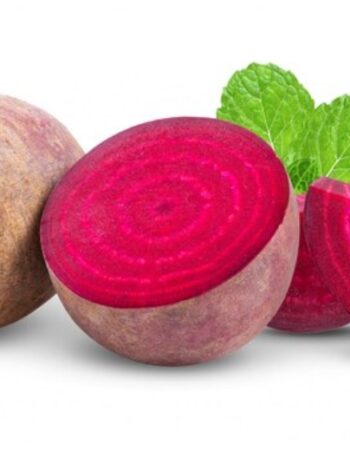The Leafy Green Powerhouse. Spinach, scientifically known as Spinacia oleracea, is a leafy green vegetable that has been cherished around the world for centuries. Known for its vibrant green color, tender texture, and mild flavor, spinach holds a special place in the culinary and agricultural traditions of many cultures. This introduction explores spinach’s origins, botanical characteristics, cultivation methods, culinary versatility, and cultural importance, providing a comprehensive overview of this beloved leafy green.
Origins and Historical Background
Spinach is believed to have originated in ancient Persia (modern-day Iran and surrounding regions), where it was cultivated as early as the 7th century. From Persia, spinach spread to neighboring regions and eventually made its way to Europe, North Africa, and Asia. Arab traders are credited with bringing spinach to the Mediterranean region by the 12th century, where it gained popularity for its ease of cultivation and nutritional value.
In medieval Europe, spinach was valued for its ability to thrive in cooler climates, making it a staple vegetable during the off-season for other greens. The vegetable found a prominent place in Italian cuisine during the Renaissance period, especially after Catherine de Medici, an Italian noblewoman who became Queen of France, popularized its consumption in French royal kitchens.
Over time, spinach became widely cultivated and embraced by cultures worldwide, evolving into numerous varieties and becoming a common ingredient in a vast array of dishes.
Botanical Characteristics
Spinach is a member of the Amaranthaceae family, which also includes beets, chard, and quinoa. It is an annual plant that grows low to the ground with broad, flat leaves that can vary in shape from smooth and rounded to slightly crinkled or savoyed (wrinkled).
Spinach plants typically reach heights of 12 to 18 inches, with leaves that range in color from bright to dark green. The leaves grow in rosettes, spreading outward from a central stem. Spinach is dioecious, meaning individual plants are either male or female, which is important for seed production but not for leafy harvest.
The plant produces small, inconspicuous greenish flowers that eventually develop into seeds. These seeds are round and black, used for propagation.
Varieties of Spinach
There are several common types of spinach cultivated today, each with distinct characteristics:
- Savoy Spinach: Recognizable by its dark green, curly, crinkled leaves, savoy spinach has a robust texture and is often sold fresh. Its rugged leaves hold up well in cooking and are popular in salads and sautés.
- Flat-Leaf Spinach: Also known as smooth-leaf spinach, this variety has smooth, flat leaves that are easier to clean than savoy. It is widely used in canned and frozen spinach products because of its uniform texture.
- Semi-Savoy Spinach: A hybrid between savoy and flat-leaf, this type has slightly crinkled leaves and combines the ease of cleaning flat-leaf spinach with some texture of savoy.
Each variety adapts differently to growing conditions and culinary uses, offering growers and consumers options based on preference and application.
Cultivation and Growing Conditions
Spinach is a cool-season crop, thriving best in mild temperatures between 50°F and 70°F (10°C to 21°C). It grows rapidly and can be harvested within 30 to 45 days from planting, depending on the variety and conditions.
The plant prefers well-drained, fertile soil rich in organic matter. It grows well in both garden beds and containers, making it accessible to commercial farmers and home gardeners alike. Spinach requires consistent moisture for tender leaves but can be susceptible to root rot if the soil remains too wet.
Spinach is typically planted in early spring or late summer to avoid hot weather, which can cause the plant to bolt, or produce flowers and seeds prematurely. Bolting results in tougher, bitter leaves and is generally undesirable for fresh consumption.
Crop rotation is important in spinach cultivation to prevent disease buildup, as spinach is vulnerable to fungal diseases like downy mildew and leaf spot. Integrated pest management strategies help control common pests such as aphids and leafminers.
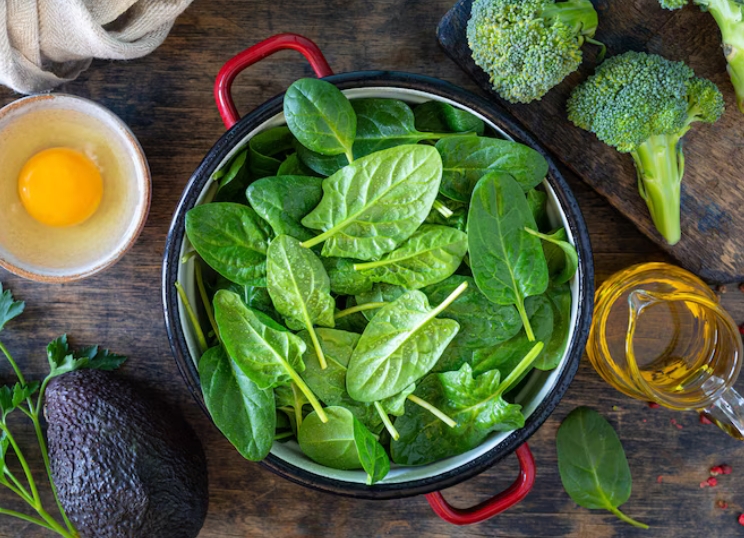
Harvesting and Post-Harvest Handling
Spinach leaves can be harvested as baby greens or allowed to mature into full-sized leaves, depending on culinary use. Baby spinach is tender and mild, often used raw in salads, while mature leaves are heartier and better suited for cooking.
Harvesting is usually done by hand, cutting leaves about an inch above the soil to allow regrowth. Spinach is highly perishable and requires careful handling to maintain freshness. It is often cooled immediately after harvest and stored at low temperatures to extend shelf life.
Spinach is commonly sold fresh, but it can also be frozen, canned, or dried. Frozen spinach retains much of its flavor and nutritional profile and is convenient for year-round availability.
Culinary Uses of Spinach
Spinach is incredibly versatile in the kitchen and used in cuisines around the world. Its mild flavor allows it to complement a wide range of ingredients and cooking methods.
- Raw: Fresh spinach leaves are popular in salads, sandwiches, and smoothies. Baby spinach, in particular, is prized for its tender texture and mild taste.
- Cooked: Spinach can be steamed, sautéed, boiled, or added to soups, stews, and casseroles. It cooks quickly and shrinks significantly, so recipes often call for generous amounts.
- Baked: Spinach is a key ingredient in many savory pastries and dishes, such as spanakopita (a Greek spinach and feta pie) and quiches.
- Blended: Spinach is often incorporated into smoothies and juices for a nutritious boost, blending well with fruits and other vegetables without overpowering their flavors.
Its ability to blend seamlessly into dishes makes spinach a culinary staple in salads, sides, main courses, and even beverages.
Cultural Significance
Spinach holds cultural significance in many parts of the world. In the Mediterranean, it has been a symbol of health and vitality since ancient times. The vegetable is frequently featured in traditional dishes and festivals, celebrated for its role in local diets.
In Western popular culture, spinach gained a reputation for strength and vitality, thanks in part to the iconic cartoon character Popeye the Sailor. Popeye’s love of spinach introduced the vegetable to a broader audience, especially children, and helped boost its consumption.
In many Asian countries, spinach is incorporated into everyday meals, highlighting its global reach. Its ease of cultivation and versatility have made it a food staple in both rural and urban settings.
Economic Importance
Spinach is an important commercial crop worldwide. Major producers include China, the United States, Japan, and several European countries. It is grown both on a large scale for fresh market sales and as a processed product for frozen and canned goods.
Spinach farming supports local economies, especially in regions where the climate favors multiple harvests per year. The vegetable’s popularity ensures steady demand, contributing to agricultural diversity and food security.
Environmental and Agricultural Impact
Spinach cultivation, like many leafy greens, requires thoughtful water and pest management to reduce environmental impacts. Sustainable practices, including organic farming and integrated pest management, are increasingly employed to maintain soil health and biodiversity.
Its relatively short growing cycle allows for multiple plantings per year, helping farmers maximize land use and income. Spinach also plays a role in crop rotation systems, helping to disrupt pest and disease cycles in farms.
Conclusion
Spinach is much more than just a leafy green vegetable. With a rich history that spans continents and centuries, it is a plant deeply woven into culinary traditions and agricultural practices worldwide. Its adaptability to various climates and soils, ease of cultivation, and incredible versatility in cooking have made it a global favorite.
From ancient Persia to modern kitchens, spinach continues to be celebrated for its culinary flexibility, cultural importance, and economic value. Whether enjoyed fresh in a salad or cooked into a hearty dish, spinach remains a beloved and indispensable part of diets around the world.
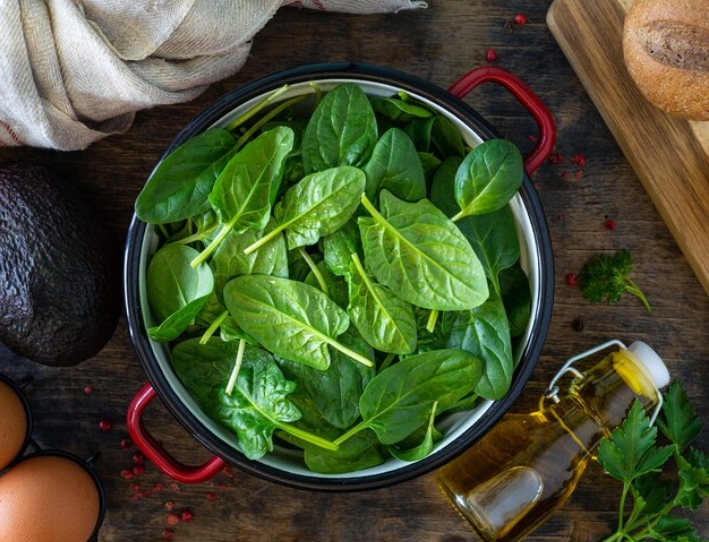
Health Benefits Of Spinach Explained
1. Rich Source of Nutrients
Spinach is packed with essential vitamins and minerals, including vitamins A, C, K, folate, iron, and calcium. These nutrients play vital roles in maintaining overall health, supporting bodily functions such as vision, immune response, blood clotting, and bone health. Regular consumption of spinach ensures a steady supply of these key nutrients necessary for optimal well-being.
2. Supports Eye Health
Spinach contains high levels of lutein and zeaxanthin, two antioxidants known for their protective effects on the eyes. These compounds help filter harmful blue light and protect against age-related macular degeneration and cataracts, common causes of vision loss. Eating spinach regularly can contribute to maintaining clear and healthy eyesight over time.
3. Boosts Immune Function
The high vitamin C content in spinach plays a crucial role in enhancing the immune system. Vitamin C stimulates the production of white blood cells and strengthens the skin’s barrier, making it harder for pathogens to enter the body. Additionally, antioxidants in spinach help reduce inflammation and protect immune cells from damage.
4. Promotes Healthy Digestion
Spinach is an excellent source of dietary fiber, which supports digestive health by promoting regular bowel movements and preventing constipation. Fiber also nourishes beneficial gut bacteria, contributing to a balanced microbiome. Including spinach in your diet can improve overall gut function and reduce digestive discomfort.
5. Supports Bone Health
Vitamin K is essential for bone metabolism and plays a key role in calcium absorption and bone mineralization. Spinach is one of the best plant-based sources of vitamin K, helping maintain strong and healthy bones. Regular intake of spinach may reduce the risk of fractures and osteoporosis, especially when combined with adequate calcium.
6. Helps Regulate Blood Pressure
Spinach is rich in nitrates, naturally occurring compounds that help relax blood vessels and improve blood flow. This vasodilation effect can help lower blood pressure, reducing strain on the cardiovascular system. Consuming spinach regularly can be part of a heart-healthy diet aimed at managing hypertension.
7. Supports Brain Health
The antioxidants and anti-inflammatory compounds found in spinach contribute to protecting brain cells from oxidative stress and inflammation, factors linked to cognitive decline. Nutrients like folate and vitamin K also support neurotransmitter function and brain development, potentially enhancing memory and mental clarity.
8. Aids in Weight Management
Spinach is low in calories but high in fiber and water content, making it a satisfying addition to meals without adding excess calories. The fiber promotes feelings of fullness, helping to control appetite and reduce overall calorie intake. Incorporating spinach into your diet can support healthy weight management efforts.
9. Supports Healthy Skin
Spinach contains vitamins A and C, both of which are important for maintaining healthy skin. Vitamin A promotes skin cell turnover and repair, while vitamin C is essential for collagen production, helping skin maintain elasticity and firmness. Antioxidants in spinach also help protect skin from damage caused by UV rays and pollution.
10. Helps Maintain Healthy Blood Sugar Levels
Spinach’s high fiber and antioxidant content can help stabilize blood sugar levels by slowing the absorption of sugar into the bloodstream and reducing oxidative stress, which can impair insulin function. This makes spinach a beneficial food for people managing diabetes or aiming to prevent blood sugar spikes.
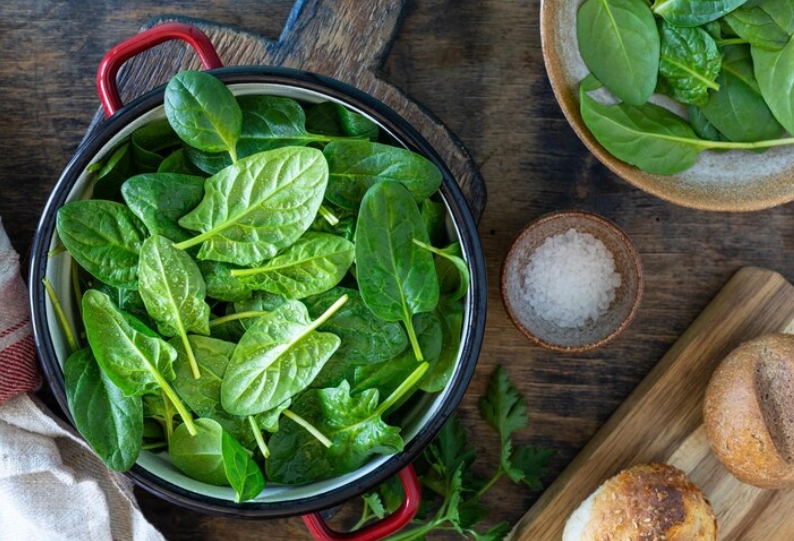
Frequently Asked Questions about Spinach Explained
1. What is spinach, and where does it come from?
Spinach (Spinacia oleracea) is a leafy green vegetable native to Central and Western Asia. It has been cultivated for centuries and became popular in Mediterranean and European cuisines. Known for its tender leaves and mild flavor, spinach is now grown worldwide and used in a variety of dishes due to its versatility and nutrient density.
2. What are the different types of spinach?
There are three main types of spinach commonly grown and consumed: savoy, flat-leaf (smooth), and semi-savoy. Savoy spinach has dark, curly, crinkled leaves and a robust texture, often used fresh. Flat-leaf spinach has smooth, broad leaves that are easier to clean and popular in canned or frozen products. Semi-savoy is a hybrid with slightly crinkled leaves, offering a balance between texture and ease of use.
3. How should spinach be stored to keep it fresh?
Spinach is highly perishable and should be stored in the refrigerator. It’s best kept in a plastic bag or airtight container with a paper towel to absorb excess moisture, which helps prevent wilting and spoilage. Fresh spinach typically lasts about 3 to 5 days when stored properly. Washing spinach before storage is generally not recommended, as moisture can speed up decay.
4. Can spinach be eaten raw, or should it always be cooked?
Spinach can be eaten both raw and cooked. Raw spinach is tender and mild, making it perfect for salads, smoothies, and sandwiches. Cooking spinach, whether by steaming, sautéing, or boiling, softens its texture and concentrates its flavor. Cooking also reduces oxalate levels, compounds that can interfere with nutrient absorption, making cooked spinach sometimes easier to digest for certain individuals.
5. Does spinach contain oxalates, and should people worry about them?
Yes, spinach contains oxalates, natural compounds that can bind with minerals like calcium and form kidney stones in susceptible individuals. For most people, consuming spinach in moderation is safe and healthy. However, those with a history of kidney stones or certain medical conditions should consult a healthcare provider about their spinach intake and may benefit from cooking spinach to reduce oxalate levels.
6. What are the best ways to cook spinach?
Spinach cooks very quickly and can be prepared in various ways. Common methods include steaming, sautéing with garlic and olive oil, boiling briefly, or adding it to soups and stews. Because it shrinks substantially when cooked, it’s often recommended to use a large amount when cooking. Cooking enhances its flavor and softens the leaves, making it suitable for a wide range of dishes.
7. How does spinach compare to other leafy greens?
Spinach is one of the most nutrient-dense leafy greens, offering a rich supply of vitamins A, C, and K, as well as minerals like iron and calcium. Compared to kale or Swiss chard, spinach has a milder taste and more tender leaves. While kale is often touted for its toughness and nutrient profile, spinach’s versatility and milder flavor make it a favorite in salads and cooked dishes alike.
8. Can spinach be frozen, and how does freezing affect its quality?
Yes, spinach can be frozen, which is an excellent way to preserve it beyond its short fresh shelf life. Frozen spinach is usually blanched before freezing to preserve color, texture, and nutrients. While freezing causes the leaves to become softer and less suitable for salads, it works perfectly in cooked dishes such as casseroles, soups, and smoothies. Frozen spinach retains much of its nutritional value.
9. Are there any common pests or diseases that affect spinach plants?
Spinach plants can be vulnerable to pests such as aphids, leaf miners, and flea beetles, which can damage leaves and reduce yields. Common diseases include downy mildew and leaf spot, which can affect leaf quality and plant health. Gardeners often use crop rotation, proper spacing, and organic pest control methods to minimize damage and ensure healthy crops.
10. How can I grow spinach at home?
Growing spinach at home is relatively easy, especially in cooler seasons like spring and fall. It prefers well-drained, fertile soil with plenty of organic matter. Spinach seeds can be sown directly into the garden or containers and need consistent moisture to germinate. Because spinach grows quickly, it can be harvested multiple times by cutting leaves or harvesting the whole plant. Ensuring proper sunlight and avoiding heat stress will help produce tender, flavorful leaves.



